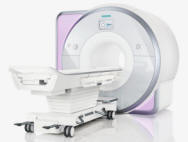 Medtronic Pain Therapies comprise two medical technologies –
neurostimulation and intrathecal drug delivery (IDD) – which are
indicated to reduce and control, chronic, intractable pain.
Medtronic Pain Therapies comprise two medical technologies –
neurostimulation and intrathecal drug delivery (IDD) – which are
indicated to reduce and control, chronic, intractable pain.
Studies have proven that both therapies provide effective pain
relief and significant improvements in quality of life for
people suffering from severe, chronic pain conditions. In
addition, both therapies are reversible and are preceded by
screening tests which help predict the patients most likely to
benefit from treatment.
Both therapies act on specific structures of the nervous system
to reduce and control pain. However, the mechanism of action and
type of pain most responsive to each therapy differ.
Neurostimulation is most effective for neuropathic pain, whereas
IDD is most effective for nociceptive pain. IDD can also be used
in cases where the neurostimulation screening trial has been
unsuccessful.
 Principles of drug delivery
Principles of drug delivery
Many studies have demonstrated the efficacy of opioids, such as
morphine, in the management of pain. Pain relieving drugs can be
delivered via several routes of administration, including:
● Systemic delivery – typically given first line
● Intraspinal (epidural and intrathecal) delivery – given when
patients experience intolerable side effects on systemic drugs
Pain-relieving drugs can be delivered orally, rectally,
transdermally or given as an injection (intravenous,
subcutaneous, intramuscular).
These forms are called systemic delivery because the pain
relieving drug circulates throughout the patient’s entire body .
Pain-relieving drugs can also be delivered intraspinally.
Intraspinal delivery
can be given in one of two ways; into the epidural space or into
the
intrathecal space. Pain-relieving drugs delivered epidurally
also circulate
systemically. By contrast, pain-relieving drugs delivered
intrathecally
circulate only in the cerebropsinal fluid (CSF).
Intraspinal
pain-relieving
drugs can be an effective option for patients who experience
inadequate
pain control or intolerable adverse effects with oral or
systemic drugs.
 Challenges of delivery of pain-relieving drugs
Challenges of delivery of pain-relieving drugs
Several challenges accompany delivery of pain-relieving drugs,
including:
● Barriers to the site of action
● Dosing issues
● Potential adverse events
 Barriers to the site of action
Barriers to the site of action
One challenge with delivery of pain-relieving drugs is that
these drugs are
water-soluble. A collection of anatomical structures exist that
slow or prevent
water-soluble molecules from entering the brain and nervous
system. This
natural barrier is called the blood–brain barrier. Systemically
delivered pain relieving
drugs must cross the blood–brain barrier to reach the site of
action
(e.g. morphine must reach the opioid receptors in the dorsal
horn).
However, because of their water solubility these systemically
circulating
molecules cannot easily pass through the blood–brain barrier. As
a result,
larger doses of the pain-relieving drugs may be required for
efficacy. |
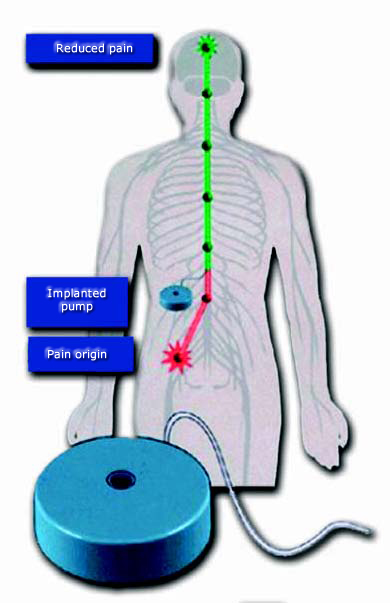 |
| |
Figure 1 : The implanted intrathecal drug delivery system |
Intraspinal pain-relieving drugs (e.g. epidural and intrathecal
morphine) are
delivered directly to the site of pain transmission (thereby
bypassing the
blood–brain barrier). However, while both epidural and
intrathecal routes
transport drugs via CSF circulation, epidurally administered
pain-relieving
drugs must first cross the dura (the protective outer layer of
the spinal cord)
before entering the CSF. Therefore, when the epidural route of
delivery is used,
more time and higher doses are required for the pain-relieving
drugs to reach
their appropriate receptors in the dorsal horn compared with IDD
delivery.
 Dosing issues
Dosing issues
Dosing issues are of special concern in the systemic delivery of
pain-relieving
drugs as a result of the adverse effects associated with these
compounds.
For example, large doses of systemic opioids may be required to
treat severe
pain. The larger the dose requirement, the more adverse effects
a patient is
likely to experience. Therefore, a reduction in pain may be
achieved at the
cost of such adverse effects as a reduction in a patient’s
alertness and
mobility, nausea, vomiting, constipation, dizziness and
dysphoria.
Due to the substantially lower dose required, intraspinal
delivery may offer
effective pain relief with fewer potential adverse effects for
patients with
chronic intractable pain who are experiencing inadequate pain
relief or
intolerable side effects on high-dose systemic pain-relieving
drugs. In many
cases, the intrathecal pain-relieving drug dose may be reduced
to 1/300th of
the oral morphine dose.
|
Table 1: Typical dose conversions for pain-relieving drug
delivery |
| Oral to intravenous = 3:1 |
| Intravenous to epidural = 10:1 |
| Epidural to intrathecal = 10:1 |
 Potential adverse effects of morphine
Potential adverse effects of morphine
Regardless of the route of delivery, pain-relieving drugs can
cause adverse
effects. However, most adverse effects can be effectively
managed by
reducing the amount of drug circulating systemically in the
patient’s body.
As IDD requires a lower dose of pain-relieving drugs than
systemic drug
delivery, IDD can minimize many of the potential adverse effects
of pain relieving
drugs or decrease their severity.
| Table 2: Comparison of delivery routes |
| Criteria |
Systemic delivery |
Epidural delivery |
Intrathecal delivery |
| Method of delivery |
● Must cross the
blood–brain barrier
before reaching the
site of action |
● Must cross the
dura before
reaching the site
of action |
● Directly infused
into the CSF;
bypasses the
blood–brain barrier |
| Potential adverse
events |
● More potential for
adverse events than
intraspinal delivery
including
constipation,
lightheadedness,
dizziness, sedation
nausea and
vomiting |
● Greater potential
for adverse effects
than intrathecal
delivery |
● Lowest potential for
adverse effects
● Potential adverse
effects such as
pruritis and urinary
retention can
usually be
effectively managed
under a physician’s
care |
| Dosage requirement |
● Substantially higher
dosage required
than intraspinal
delivery |
● Higher dosage
required than
intrathecal, but
lower dosage than
systemic delivery |
● Lowest dosage
required
(1/10th epidural,
1/300th oral) |
 Intrathecal drug delivery systems
Intrathecal drug delivery systems
Intrathecal drug delivery (IDD) delivers small doses of
pain-relieving drugs,
such as morphine, via a pump (SynchroMed II/SynchroMed EL/Isomed)
that is placed surgically under the skin, directly into the CSF.
This route of
administration offers the potential for more potent analgesia
with fewer
side effects than systemic routes of administration. Studies
have shown
that patients treated with intrathecal pain-relieving drugs did
not experience
many of the undesirable side effects observed with oral/parenteral
narcotics. This is due to the fact that intrathecal drug
infusion is directed to
the spinal cord (the site of action), meaning that smaller doses
are required
than with oral or intravenous methods.
 Intrathecal drug delivery system components
Intrathecal drug delivery system components
An IDD system consists of two basic components that are placed
in the
body during a surgical procedure:
● Pump
● Catheter
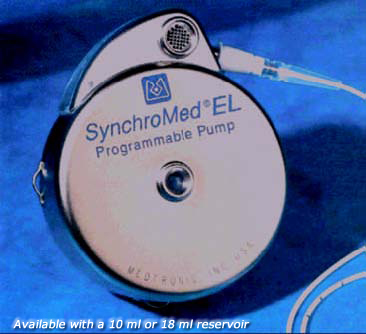 |
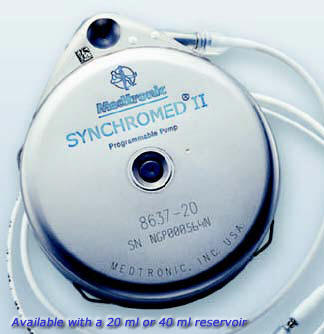 |
| Figure 2: The SynchroMed EL Intrathecal
drug delivery system |
Figure 3: The SynchroMed II Intrathecal
drug delivery system |
 Pump
Pump
The pump is a round metal device that stores and automatically
releases
prescribed amounts of pain medication through the catheter
directly into
the intrathecal space. The exact dosage, rate and timing
prescribed are
entered in the pump using a programmer, an external
computer-like
device that controls the pump’s memory. As the pump has a
constant
flow rate, the daily dosage has to be calculated before the pump
is filled
with medication. Information about the prescription is stored in
the
pump’s memory.
The pump holds a finite amount of medication, which means it
needs to be
refilled periodically. This is performed by inserting a needle
through the skin
into the pump’s reservoir. Refill intervals are typically every
1–3 months,
although this may vary depending on individual prescriptions.
Medtronic also have a constant rate pump called Isomed which is
mainly
used for chemotherapy.
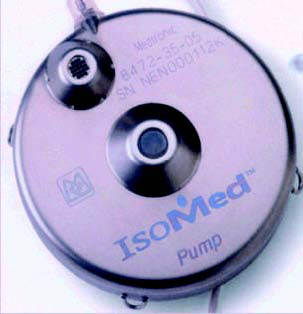 |
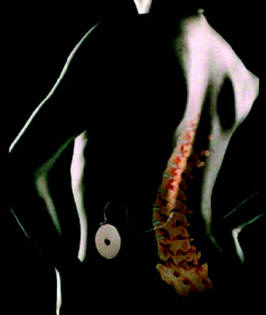 |
| Figure 4: The Isomed intrathecal
drug delivery system |
Figure 5: The fully functioning intrathecal
drug delivery system |
 Catheter
Catheter
The catheter is a small soft tube. The
catheter passer is used to help put the
catheter in. One end of the catheter is
connected to the pump and the other is
placed into the area surrounding the
spinal cord (intrathecal space).
 Functioning intrathecal drug delivery system
Functioning intrathecal drug delivery system
The functioning IDD system sends
small, programmed amounts of
pain-relieving drugs from the pump,
through the catheter directly into
the CSF in the intrathecal space,
where there is a high concentration
of receptors. |
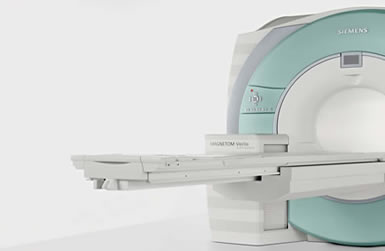






 What’s Up
What’s Up

